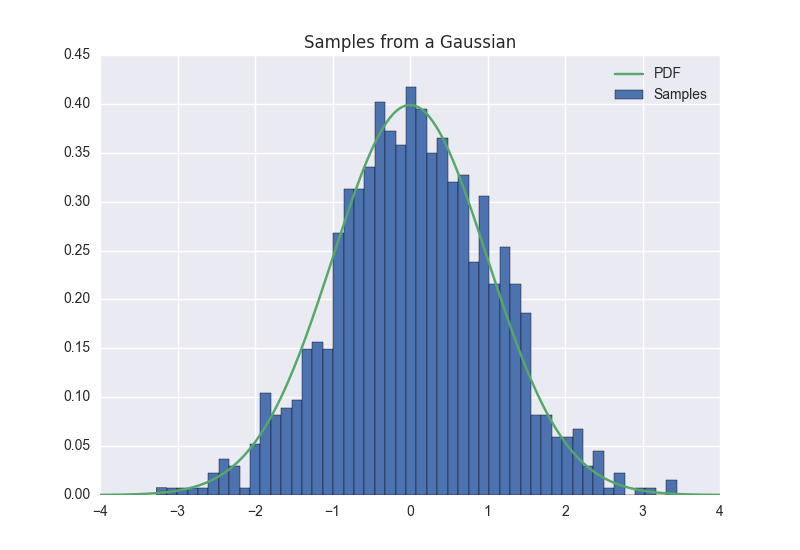This is an old revision of the document!
Objective:
To understand how to sample from different distributions, and to understand the link between samples and a PDF/PMF. To explore different parameter settings of common distributions, and to implement a small library of random variable types.
Deliverable:
You should turn in an ipython notebook that implements and tests a library of random variable types.
When run, this notebook should sample multiple times from each type of random variable; these samples should be aggregated and visualized, and compared to the corresponding PDF/PMF. The result should look something like this:

For multidimensional variables, your visualization should convey information in a natural way; you can either use 3d surfaces, or 2d contour plots:

Description:
You must implement a random variable object. These should all inherit from a base random variable object:
class RandomVariable: def __init__( self ): self.state = None pass def get( self ): return self.state def sample( self ): pass def ll( self ): return NaN def propose( self ): pass
For example, your univariate Gaussian class might look like this:
class Gaussian( RandomVariable ): def __init__( self, mu, sigma ): self.mu = mu self.sigma = sigma self.state = 0 def sample( self ): return self.mu + self.sigma * numpy.Random.randn() def ll( self ): return
* The following one dimensional, continuous valued distributions. For these, you should also plot the PDF of the random variable on the same plot; the curves should match. Note: it is not sufficient to let seaborn estimate the PDF using its built-in KDE estimator; you need to plot the true PDF. In other words, you can't just use seaborn.kdeplot!
Beta (alpha=1, beta=3)Poisson (lambda=7)Univariate Gaussian (mean=2, variance=3)
* The following discrete distributions. For these, plot predicted and empirical histograms side-by-side:
Bernoulli (p=0.7)Multinomial (theta=[0.1, 0.2, 0.7])
* The following multidimensional distributions. For these,
- Two-dimensional Gaussian
- 3-dimensional Dirichlet
Hints:
The following functions may be useful to you:
matplotlib.pyplot.contour seaborn.kdeplot seaborn.jointplot hist( data, bins=50, normed=True ) numpy.linspace legend title

